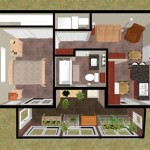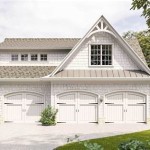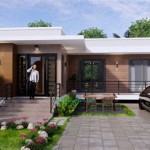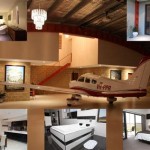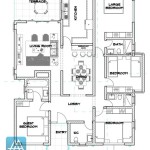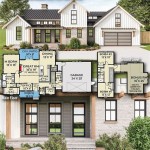How To Make A Ground Plane in Blender
Creating a ground plane in Blender is a fundamental skill for any 3D artist. It provides a visual anchoring point for your models, aids in accurate scaling and positioning, and serves as a surface for light to interact with, contributing significantly to the realism of your renders. Several methods exist for creating a ground plane, each offering slightly different advantages and use cases. This article will detail several approaches, covering basic plane creation, scaling, texturing, and more advanced techniques like using a grid or sculpting for more organic terrains.
The techniques discussed here will be applicable across various Blender versions, with minor variations depending on the specific interface and features. Regardless of the method chosen, understanding how to create and manipulate a ground plane will drastically improve the quality and presentation of your 3D work.
Creating a Basic Plane
The most straightforward method involves adding a simple plane object to the scene. This is the quickest way to establish a basic ground and is ideal for initial scene setup and quick visualizations.
Begin by opening Blender. The default scene typically includes a cube, a camera, and a light source. Delete the cube (select it and press the 'X' key, then confirm the deletion). This clears the workspace, allowing you to focus specifically on creating the ground plane.
To add a plane, press Shift+A to open the 'Add' menu. Navigate to 'Mesh' and select 'Plane'. This inserts a standard-sized plane into the scene, centered at the origin (0,0,0). The plane, by default, appears as a relatively small square in the viewport.
Scaling the plane is crucial to establishing the desired ground area. Select the plane (if it's not already selected). Press the 'S' key to activate the Scale tool. Now, drag the mouse to increase the size of the plane. You can also enter a numerical value for precise scaling. For example, typing '10' and pressing Enter will scale the plane to ten times its original size. Repeat this process until the plane covers a sufficient area for your scene. Consider the size and scale of the objects you intend to place on the ground plane when determining the appropriate dimensions.
Once the plane is scaled appropriately, it might be necessary to adjust its position. By default, the plane is centered at the origin. If you want the plane to represent the ground beneath your objects, you might need to move it downwards along the Z-axis. Select the plane. Press the 'G' key to activate the Grab/Move tool. Then, press 'Z' to constrain the movement to the Z-axis. Drag the mouse or enter a numerical value to move the plane to the desired position. A common practice is to position the plane so that its top surface is at the Z=0 level, which corresponds to the "ground" level in many 3D applications.
With the basic plane created, scaled, and positioned, it's now ready to receive materials and textures. Select the plane and navigate to the 'Material' properties tab (the sphere icon) in the Properties editor. Click 'New' to create a new material. You can then adjust the material's properties, such as the base color, roughness, and metallic values, to achieve the desired appearance. Textures can also be added to the material to create more complex and realistic ground surfaces, which will be covered in a later section.
Using a Grid Object
While a plane provides a flat surface, a Grid object offers a subdivided surface that can be useful for specific modeling techniques. A grid, unlike a plane, naturally contains vertices, edges, and faces distributed in a regular pattern across its surface. This inherent subdivision allows for easier manipulation of the surface geometry, making it suitable for sculpting or applying displacement modifiers.
Similar to adding a plane, you can add a Grid object by pressing Shift+A, navigating to 'Mesh', and selecting 'Grid'. This will insert a grid into the scene, also centered at the origin. By default, the Grid object has a certain number of subdivisions, which can be adjusted immediately after creation in the operator panel that appears in the lower left corner of the 3D Viewport. This panel allows you to specify the number of vertices along the X and Y axes, effectively controlling the density of the grid.
Scaling and positioning the Grid object follows the same principles as scaling and positioning a plane. Select the grid, press 'S' to scale, and 'G' to grab and move. Adjust the dimensions and position as needed to fit your scene. The key difference lies in the ability to manipulate the individual vertices, edges, and faces of the grid.
One common application of a Grid object is to sculpt a terrain. With the grid selected, switch to the 'Sculpting' workspace. This workspace provides tools specifically designed for deforming meshes like clay. You can use tools like the 'Grab' brush to move vertices, the 'Smooth' brush smooth out irregularities, and the 'Clay Strips' brush to add volume. By carefully sculpting the grid, you can create a realistic-looking ground surface with hills, valleys, and other terrain features.
Another advantage of the Grid object is its suitability for displacement modifiers. A displacement modifier uses a texture to displace the vertices of a mesh, creating detailed surface variations. This is particularly useful for adding subtle bumps and irregularities to the ground plane without manually sculpting every detail. To use a displacement modifier, select the grid, navigate to the 'Modifier' properties tab (the wrench icon), and add a 'Displace' modifier. You will then need to assign a texture to the modifier. This texture can be a procedural texture (such as 'Clouds' or 'Voronoi') or an image texture. Adjusting the strength and midlevel parameters of the modifier will control the intensity and overall shape of the displacement.
Using a grid offers significant advantages when detailed manipulation or displacement is desired, making it a valuable alternative to a simple plane.
Applying Textures and Materials
Creating a compelling ground plane extends beyond merely adding a flat surface. Applying appropriate textures and materials to the ground plane significantly enhances its realism and integration into the overall scene. This section will cover various techniques for texturing and shading ground planes in Blender.
Begin by selecting the ground plane (either a plane or a grid). Navigate to the 'Material Properties' tab in the Properties editor. Click 'New' to create a new material. By default, Blender uses the Principled BSDF shader, which is a versatile shader that can be used for a wide range of materials. However, you might want to explore other shader options depending on the desired effect. Options include Diffuse BSDF, Glossy BSDF, and others.
The Base Color parameter controls the overall color of the material. You can click on the color swatch to select a color from the color picker or enter a hexadecimal color code. For a realistic ground plane, consider using earth tones such as browns, greens, and grays. However, a single color can often appear flat and unconvincing.
Textures can add significant realism by introducing surface detail. To add a texture, click on the small dot to the right of the Base Color parameter. This opens a menu of available texture types. Common choices for ground planes include 'Image Texture' (for loading image textures), 'Noise Texture' (for generating procedural noise), and 'Musgrave Texture' (for creating more complex, layered noise). Select the desired texture type.
If you chose 'Image Texture', you will need to load an image. Click 'Open' and navigate to the location of your image file. Suitable textures for ground planes include dirt textures, grass textures, and rock textures. Websites like ambientCG and Poly Haven offer a wealth of free, high-quality textures. Once the image is loaded, it will appear as the base color of the material. The texture may need to be scaled or rotated to fit the ground plane appropriately. This can be achieved using the 'Mapping' node and 'Texture Coordinate' node in the Shader Editor.
If you chose a procedural texture like 'Noise Texture' or 'Musgrave Texture', adjust the parameters of the texture to achieve the desired look. The 'Scale' parameter controls the size of the texture features, while the 'Detail' parameter controls the amount of fine detail. Experiment with different parameter values to find what works best for your scene. These textures are inherently tileable and don't require external files, making them a simple solution for basic surface variation.
Beyond the base color, other material parameters contribute to the realism of the ground plane. The 'Roughness' parameter controls how diffuse the reflections are. A rough surface scatters light in many directions, resulting in a matte appearance, while a smooth surface reflects light in a more specular manner, resulting in a glossy appearance. Adjusting the roughness value can significantly impact the perceived surface quality. Dirt and soil typically have a high roughness value.
Adding a normal map can simulate surface details without actually changing the geometry of the mesh. A normal map is a special type of image that encodes surface normals. When applied to a material, it creates the illusion of bumps, ridges, and other surface variations. To add a normal map, add a 'Normal Map' node to the Shader Editor. Connect the color output of the normal map image texture to the color input of the 'Normal Map' node. Then, connect the normal output of the 'Normal Map' node to the normal input of the Principled BSDF shader. Adjust the strength parameter of the 'Normal Map' node to control the intensity of the effect. Normal maps can drastically enhance the realism of the ground plane, adding a subtle level of detail that is not possible with just the base color and roughness.
Experimentation with different textures, materials, and shader parameters is paramount to achieving the desired aesthetic. Consider the surrounding environment and lighting conditions when making material choices to ensure the ground plane integrates seamlessly with the rest of the scene.

Modeling How Do You Create An Infinite Ground Plane Blender Stack Exchange

Blender Tutorial For Beginners Part 10 Create A Terrain In Using Plane Object

Modeling How Do You Create An Infinite Ground Plane Blender Stack Exchange
Illusion Of An Endless Ground Modeling Blender Artists Community

Ground Plane Animation And Rigging Blender Artists Community

Modeling Best Way To Create The Ground For House Model Blender Stack Exchange

How To Make Grass In Blender

How To Make Grass In Blender

Blender Relief Tutorial The Plane Somethingaboutmaps

How To Make Grass In Blender
Related Posts

